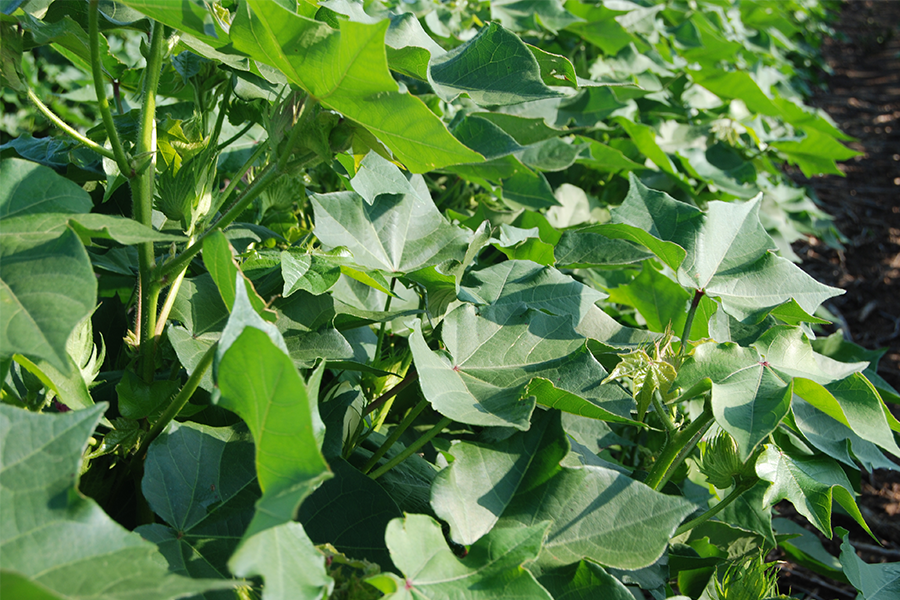Field Crops
-

This publication discusses the proper calibration methods sprayers and other liquid applicators.
Paul E. Sumner, Gary L. Hawkins, and Michael J Bader
|
-

Cotton growth monitoring is vital to producing a healthy crop, making sure that the crop is growing on track, and that there are minimal stresses on the crop. Growth monitoring also can assist in making plant growth regulator (PGR) applications. PGR applications are complex, and many factors play into the decision of when to use them and at what rates. The goal of this publication is to discuss these factors and assist in determining when to make a PGR application.
Phillip Marion Roberts, John L Snider, and Camp Hand
|
-

Variety selection is one of the biggest decisions and investments cotton growers make each year. In 2010, the UGA Extension Cotton Agronomists implemented the UGA On-Farm Cotton Variety Evaluation Program to assist in this decision. Varieties are evaluated across a wide range of environments in the cotton producing regions of Georgia in cooperation with county agents and industry partners. The implementation of this program has made a tremendous impact on variety selection from year to year, and it will continue to have the same impact in the future.
R. Anthony Black, Eric Elsner, Scott Rogers, Camp Hand, and Chandler Pope Rowe
|
-

Boom sprayer calibration using conventional methods (catching flow for certain time or distance) for large (60-90 ft; 54-72 nozzles) boom sprayers can be a time-consuming process. This short publication outlines steps to take to verify nozzle output and calibrate a boom sprayer, including tables with useful information on flow rates at multiple speeds for two common nozzle spacings and an equation for calculating rates if needed.
Eric P. Prostko and Simerjeet Virk
|
-

AP 124-1
2021 Georgia Cotton Production Guide
The 2021 cotton production guide provides an in-depth look at cotton production in Georgia and the southeastern United States. Issues discussed include economic outlook, fertility, weed management, insect management, disease and nematode management, irrigation decisions, precision ag technology, and general agronomics of the cotton crop (varieties, PGR applications, defoliation, etc.).
Stanley Culpepper, Robert C Kemerait Jr, Yangxuan Liu, Camp Hand, and Glendon H. Harris
|
-

AP 124-2
2022 Georgia Cotton Production Guide
The cotton production guide provides an in-depth look at cotton production in Georgia and the southeastern United States. Issues discussed include economic outlook, fertility, weed management, insect management, disease and nematode management, irrigation decisions, precision ag technology, and general agronomics of the cotton crop (varieties, PGR applications, defoliation, etc.).
Stanley Culpepper, Robert C Kemerait Jr, Yangxuan Liu, Camp Hand, and Glendon H. Harris
|
-

This publication is an introduction to growing industrial hemp for fiber production in Georgia. While not exhaustive, it outlines some of the major production challenges in growing this crop in the Southeastern U.S.
Eric Elsner and Timothy Coolong
|
-

Georgia ranks in the nation’s top 10 in cowpea (southern pea, Vigna unguiculata) production, with estimates of more than 4,900 acres grown in approximately 49 of 159 counties in the state in the 2014 production season. Colquitt County, located in southwest Georgia, leads the state in production with 1,900 acres. This cowpea crop profile is the first in the Southeast United States and will support cowpea growers, pest manager, and state research and Extension grant proposal applications.
Ronald D. Gitaitis, Timothy Lane Grey, David G Riley, Esendugue Greg Fonsah, Alton N Sparks, Timothy Coolong, Jason Schmidt, Bhabesh Dutta, and Michael D Toews
|
-

This horticulture publication is about the commercial production of southern peas.
Darbie M. Granberry and Timothy Coolong
|